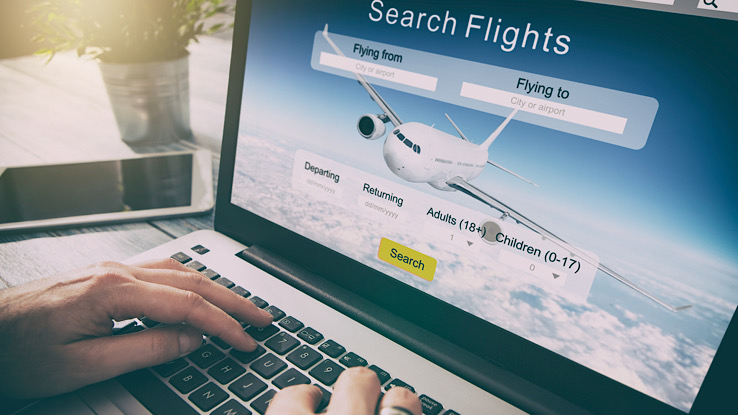Everything You Need to Know About Budget Airlines

In today’s world, finding ways to save money is more crucial than ever. From couponing and earning rewards points to snagging amazing deals, there are plenty of strategies to keep your finances in check. In the past, however, airports were notorious for their high prices—where plane tickets seemed reserved for the affluent or business travelers. Many had to scrimp and save for months just to afford a flight. Fortunately, a shift occurred when some airlines recognized the demand for affordable travel options and launched low-cost flight programs aimed at budget-conscious travelers. So, what exactly is a budget airline or low-cost carrier? What’s included in your ticket price? Are there any surprise fees lurking beneath the surface? Keep reading to uncover everything you need to know about budget airlines.
The History of Budget Airlines
The first budget airline was Pacific Southwest Airlines, launched in 1949 in California. It offered lower fares than any other carrier at the time, its first flight selling tickets for just $15 per seat. Because there was no existing business model for budget airlines, Pacific Southwest Airlines blazed the trail in the airline industry. They set the standard for all budget airlines until USAir absorbed it in 1987.
With the foundation laid for a successful budget airline business model, Southwest Airlines launched in the early 1970s — and many carriers followed suit, offering lower prices to keep up. For example, the average cost of a round-trip domestic flight in 1990 was $566, and by 2019, the average cost of the same trip fell to $367.34. As airlines innovate new ways to cut operating costs and pass savings down to the passenger, prices continue to drop.
The newest wave to hit the airline industry is the Ultra Low-Cost Carrier. These barebones airlines offer cheap fares to passengers willing to fly with few amenities. Spirit Air and Allegiant Air are the two largest ultra-low-cost carriers in the United States.
What Is Included in Budget Airlines?
Services on low-cost airlines are limited. For many carriers, the price of the seat includes nothing more than just that — the seat and one personal item. Any additional items will usually cost you extra. Most budget airlines do not serve food, and some do not even have beverage service. Look up information about what is included in your ticket price before booking a budget flight.
Pros of Budget Airlines
Whether traveling for business or pleasure, the biggest advantage of flying on a budget airline is the money you’ll save. For example, a round-trip ticket from Dallas-Fort Worth to NY LaGuardia can be about $300 through American Airlines (depending on travel dates). The same trip will cost you less than $100 if you book with Spirit. That’s about $200 that remains in your wallet!
Just because budget airlines cost less does not mean your airplane will be less safe. Budget airlines follow the same safety standards as classic carriers. So, your plane will be in tip-top shape regardless of your airline. In fact, many budget airlines purchase brand new planes for their fleets which means you’ll be able to see the latest flight technology in action.
Low-cost airlines can provide relief and satisfaction for passengers on a tight budget. However, it is important to know there could be some disadvantages to flying cheap.
Cons of Flying Low-Cost
Because the overhead is lower for cheaper flights, budget airlines make their money in other places. You may notice that some carriers charge for checked bags which can get expensive pretty quickly. You may even be charged for additional carry-on items as well. If your airline does provide meal or beverage service, expect to pay for each item.
Many budget carriers offer flights with extreme departure and arrival times, and some even have multiple connections and layovers. If you want a nonstop flight, they are generally more expensive. Keep this in mind if you need to get to your destination in a hurry.
It is important to remember that you may not be refunded for cancellations and may not be able to change your flight if something comes up.
While you will save a good portion of money choosing a budget airline, it is easy to rack up extra fees if you aren’t careful.
What Airlines Are Considered Low-Cost?
- Southwest Airlines is a classic example of a low-cost airline. They have operated for nearly 50 years. The average fare from 2011 to 2021 was $142.
- JetBlue is a low-cost airline that offers a few of the same amenities as standard airlines. JetBlue offers free wifi, extra legroom, and even a few free snacks while keeping fares nearly as low as its budget airline competitors.
- Spirit Air is a relative newcomer to the industry but has quickly proven a worthy competitor with extremely low pricing.
- Allegiant Air offers astoundingly low prices. In 2019, the average fare of an Allegiant flight was just $53!
Keep in mind that these fares are base fees, and most do not include extra amenities like seat selection, extra bags, food and beverages, or priority boarding.
The Bottom Line
You can save a lot of money by booking your flight with a budget airline. However, you must be willing to plan ahead, pack lightly and prepare for extra fees if you require additional accommodation. Low-cost airlines offer convenient and inexpensive options for travelers on a budget.






